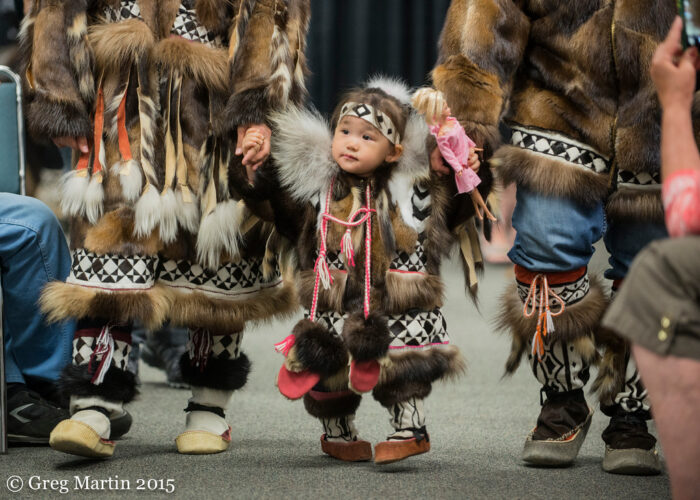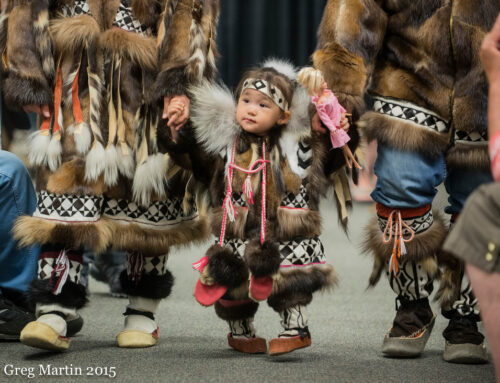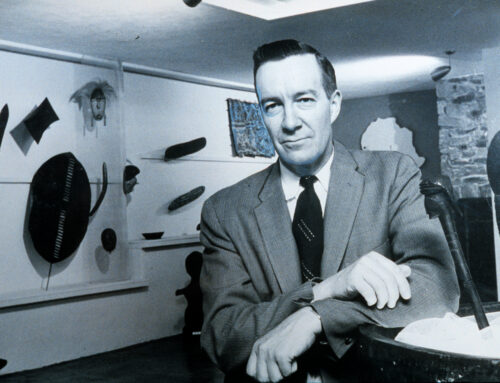Bob Atwood
Pioneering Anchorage’s Press: The Arrival and Legacy of Robert Bruce Atwood
Robert Bruce Atwood, arrived in Anchorage on June 15, 1935, when the town boasted a modest population of approximately 2,200 residents. Taking the reins as editor of the local newspaper, the Anchorage Daily Times, at the age of 28, he later renamed it the Anchorage Times in 1975. Atwood was resolute in his mission to enhance the newspaper’s reach, marking the commencement of his prominent role within the community.
Born on March 31, 1907, in Chicago, Illinois, Atwood spent his formative years in the suburbs and graduated from New Trier High School in Winnetka. Despite familial expectations of pursuing a career in law or academia, he pursued journalism studies at Clark University in Worcester, Massachusetts. Juggling various jobs to support himself, including managing the university’s print shop and reporting for the Worcester Telegram, Atwood earned his B.A. in 1929. Subsequently, he returned to Illinois, where he worked as a court reporter for the Illinois State Journal in Springfield. It was during his time in Springfield that Atwood encountered Maud “Evangeline” Rasmuson, a social worker from Alaska, whom he would marry in 1932. Following their stint at the Worcester Telegram, the couple embarked on their journey to Alaska.
In 1935, Atwood seized the opportunity to acquire the Anchorage Daily Times, marking the onset of his influential tenure in Alaska. Under his stewardship, the newspaper thrived, experiencing exponential growth from a modest readership of 650 and five employees to nearly 50,000 subscribers and 400 staff members. However, financial constraints ultimately led to the paper’s sale to the VECO Corporation in 1989, culminating in its closure in 1992 after serving the community for 92 years. Atwood played a pivotal role in advocating for Alaska’s statehood, collaborating with influential figures such as E.L. “Bob” Bartlett and William A. “Bill” Egan. Serving as Chairman of the Alaska Statehood Committee, he spearheaded initiatives to educate the public and garner support for statehood, resulting in the enactment of the Alaska Statehood Act in 1958.
Renowned for his impassioned editorials, Atwood championed numerous initiatives that shaped the trajectory of Anchorage and Alaska’s development. He advocated for federal investments in the region, pushed for the relocation of government facilities to Anchorage, and played a crucial role in establishing institutions such as the Alaska Native Health Service hospital and Alaska Methodist University. Despite encountering setbacks, such as his unsuccessful attempts to relocate the state capital to southcentral Alaska, Atwood’s legacy persisted through his contributions to journalism, business, and civic leadership. His investments in oil leases, alongside a consortium of investors known as “the Spit and Argue Club,” significantly influenced Alaska’s economic landscape following the discovery of oil reserves in the state.
In his later years, Atwood remained actively engaged in civic and cultural pursuits, leaving an enduring imprint on the community. The establishment of the Atwood Foundation in 1962 and the Atwood Chair of Journalism at the University of Alaska Anchorage in 1979 underscored his dedication to education and the arts. The Bob and Evangeline Atwood Resource Center at the Anchorage Museum at Rasmuson Center stands as a tribute to his commitment to preserving the history of Anchorage and Alaska. Robert Bruce Atwood passed away on January 10, 1997, leaving behind a legacy characterized by leadership, innovation, and philanthropy. His contributions continue to shape Alaska’s societal fabric, inspiring future generations to embrace his vision for a vibrant and prosperous community.

Photos courtesy of Alaskas News Source, Visit Anchorage and the Anchorage Daily News.









